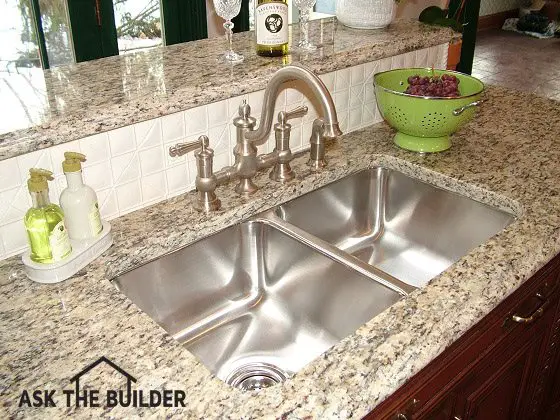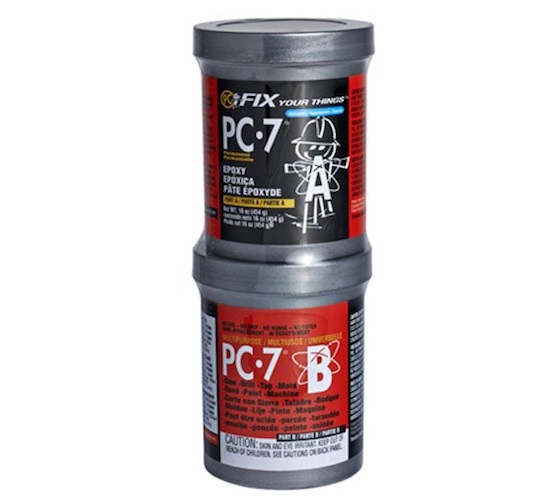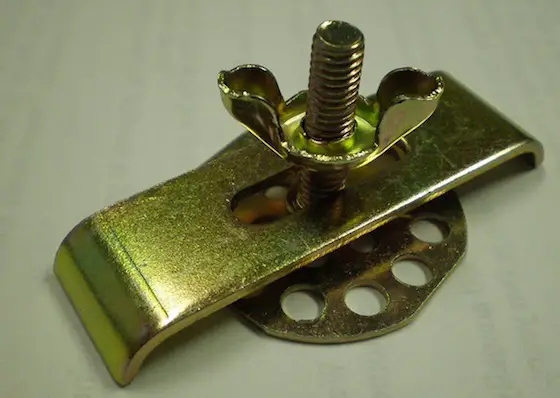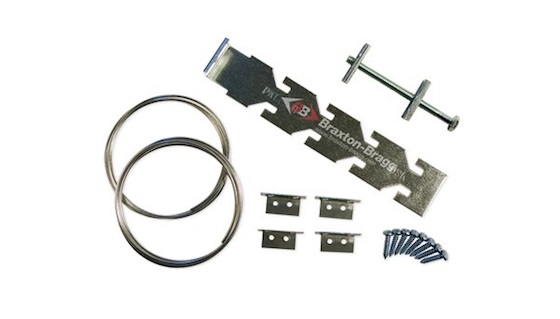Undermount Kitchen Sinks

Undermount Sink Installation | This is my own undermount kitchen sink at my own home. My wife loved this countertop and sink. We sold the house and moved to New Hampshire. It's harder to install the above sink than it is to install a wall-hung sink bracket. © 2021 Tim Carter
"I think it's reasonable for a person to wonder how in the world the sink will stay permanently attached to the countertop with this kind of weight regularly trying to pull the sink down into the base cabinet."
Undermount Kitchen Sink Checklist
- Sink anchors epoxied into underside of countertop
- Bad installers use caulk
- Wait one day before installing strainer, disposer and drainpipes
- WATCH my Sink Strainer VIDEO Below
- CLICK HERE to Get Tim's FREE & FUNNY Newsletter
DEAR TIM: Are undermount kitchen sinks a good idea? I have never had one, and am worried about leakage where the undermount sink contacts the underside of the countertop.
I want a granite undermount kitchen sink, but am worried the sink will pull away from the granite countertop. This would be a nightmare, especially if the sink was filled with water.
What undermount sink installation tips can you share that will allow me to buy one with complete confidence? Christy F., Flemington, NJ
DEAR CHRISTY: The first thing I can tell you is an undermount kitchen sink will give you a lifetime of leak-free performance if it is installed correctly. I have several undermount sinks in my own home, and they simply do not leak where the sink touches up against my granite countertops.
Related Links
Repair an Undermount Kitchen Sink With Ease
Stainless Steel Sinks Are Superb
It's important to note I felt the same way you did about undermount kitchen sinks. It was the plumber in me that made me a Doubting Thomas. After all, a standard double-bowl sink that has a disposer on one side and is completely filled with water weighs well over 100 pounds.
I think it's reasonable for a person to wonder how in the world the sink will stay permanently attached to the countertop with this kind of weight regularly trying to pull the sink down into the base cabinet.
CLICK HERE to Get FREE & FAST BIDS from local countertop installers.
How is the Undermount Kitchen Sink Attached?
High-strength epoxies, anchors and clips, and silicone caulk are used to attach the sink to the underside of the stone tops.
The undermount sinks are held in place with metal anchors that are glued to the underside of the stone with a two-part epoxy that cures rapidly and has incredible tensile strength once cured.
Furthermore, a bead of silicone caulk helps bond the sink to the stone to prevent water leaks between the sink and the underside of the countertop.
What is a Great Epoxy to Use?
PC-7 is a great epoxy that will not sag or drip when installing the anchors to the underside of a stone countertop. Remember, blow out all the dust from the holes before applying the epoxy.

I've used epoxies made by this company for both inside and outside projects. PC Products makes a superb epoxy right here in the USA! CLICK THE IMAGE TO ORDER SOME NOW.
Does the Stone Need to be Dust-Free?
Another key point is to make sure the underside of the stone countertop is dust-free. Dust will cause the epoxy bond to fail.
Any installer worth his salt will take a brush to remove stone dust from underneath the countertop. Dust in this location is a strong possibility because of the cut made to create the hole for your sink.
How is the Sink Cutout Created?
It must be remembered the granite countertop fabricator had to cut a special-shaped hole in the stone top to create the hole for your undermount sink. The undermount sinks come with a cutout template that's traced onto the stone.
Once the cut is made, the fabricator has to polish the rough stone edge.
What Generates the Thick Dust Under the Top?
Cutting out the hole for the sink and polishing the edge generates thick dust under the top.
The water that is used during the polishing process gets very small pieces of stone in it, and this slurry can roll to the underside of the countertop. Once the water component of the slurry evaporates, the stone grit or dust is left behind.
There's no real standard as to how much overhang the stone should be beyond the actual sidewalls of the sink. I always tried to have no less than 1/8 inch for an overhang and certainly no more than 1/4 inch.
CLICK HERE to Get FREE & FAST BIDS from local countertop installers.
Will Caulk Hold a Sink In Place?
No, caulk is not to be used as the adhesive to hold the sink to the stone. Caulk is just used to create a waterproof seal between the sink and the stone top.
Most undermount sinks come with very clear written installation instructions. Every set of instruction I have seen calls for a bead of clear silicone caulk to be placed around the flat lip of the undermount sink. This continuous bead of caulk acts as the waterproof seal between the sink and the countertop once the undermount sink is pressed permanently against the stone countertop.
Every month or so I get an email from a homeowner who's undermount sink has crashed down into their cabinet. Each autopsy report shows the idiot installer cut corners and just used caulk to hold the sink. They never bothered to use anchors and epoxy.
How Long Does it Take To Install the Sink?
Most professional installers can install an undermount kitchen sink in 30 minutes or less. The tools required are a 2x4 longer than the sink cutout is wide, one or two bar clamps, the special two-part epoxy and the caulk and caulk gun.
Once the installer knows the underside of the stone top is dust-free, he applies the silicone caulk to the sink lip. The sink is then pushed up against the underside of the stone top and centered under the polished cutout.
The 2x4 is then placed on top of the countertop spanning across the sink. One end of the bar clamp goes through the large drain hole in the sink and the other end goes on top of the 2x4. A double-bowled sink needs two clamps, one for each drain hole.
The clamps are partially tightened and the reveal of the sink is checked to make sure it is even around the entire cutout of the granite. The clamps are then fully tightened.
It's now time to mix the two-part epoxy and apply it to the small bolt posts that are glued next to the lip of the undermount sink. The installers are on their backs in the sink base looking up when they do this.
What are Different Undermount Kitchen Sink Anchors?
There are several types of anchors that can be used to mount an undermount sink. One type you have to drill holes for.
Another anchor has a wide round base at the bottom of the threaded stud. This base has holes in it that allow the epoxy to ooze through. These are very good if you make sure the underside of the stone / granite is dust-free. Here's a good example of this anchor. CLICK HERE to see all the different types of anchors.

This is a common undermount sink anchor and clip. You can see the round base of the threaded stud. Use this type with the PC Products epoxy above. CLICK THE IMAGE TO SEE MANY ANCHORS.
The epoxy sets rapidly, usually in ten minutes or so. After this wait period, the rest of the hardware that clamps the sink to the bolt posts is installed. It is good to wait at least one day before the plumber arrives to connect any drain piping or a heavy disposer to the undermount sink.
Before the drain piping is attached to the sink, it is wise to tighten the nuts that hold the clamps in place. Do not over tighten. Simply make sure they are snug. The adhesive properties of the silicone caulk in conjunction with the epoxy hold the sink permanently in place.
How Long Should the Epoxy Cure?
The epoxy should cure at least 24 hours before you apply tension forces to it.
The biggest mistake you or an installer can make is trying to rush the job. All too often an aggressive plumber, remodeler or homeowner will try to finish the entire job the same day.
They will wait six or seven hours thinking the epoxy is plenty hard, only to discover that the weight of a heavy disposer pulls the sink away from the countertop.
The bolt posts and nuts are not common items found at hardware stores or online. CLICK HERE to see a wide assortment of great undermount sink anchors.
Is There a No-Epoxy Method to Install a Sink?
There's another way to support an undermount sink and it doesn't involve using epoxy. The undermount sink is supported by a wire harness that's snugged up against the bottom of the sink using an ingenious drawbar.
It's called the Hercules Universal Sink Harness Kit. CLICK HERE to ORDER IT NOW.

Here are all the parts for the Hercules Universal Sink Harness Kit. You just need a simple screwdriver and a wrench to install it. EASY! CLICK THE IMAGE TO ORDER ONE NOW.
Hercules Universal Sink Harness Install VIDEO:
CLICK HERE to Get FREE & FAST BIDS from local countertop installers.
Column 662


38 Responses to Undermount Kitchen Sinks